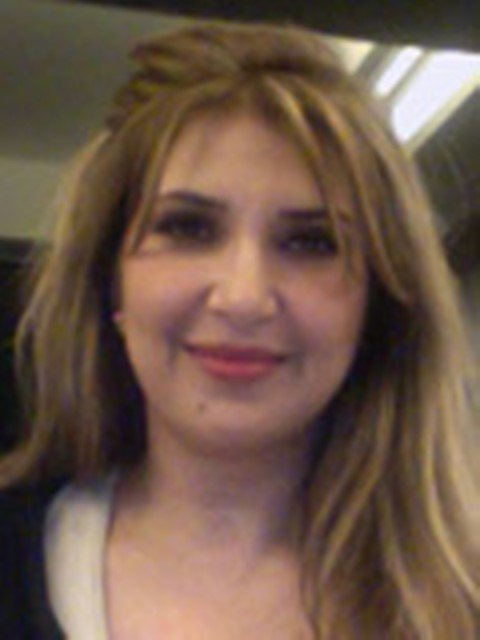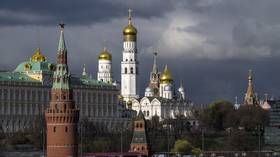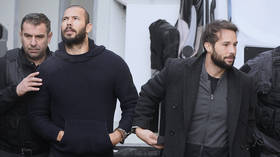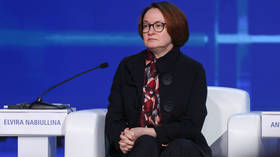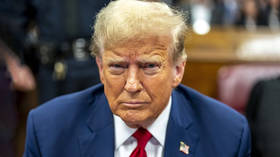Syria: The hidden massacre
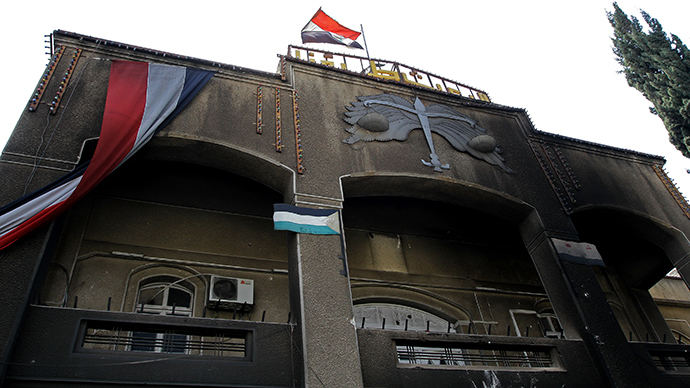
The attack took place shortly after the first stirrings of trouble in the southern Syrian city of Daraa in March 2011.
Several old Russian-made military trucks packed with Syrian security forces rolled onto a hard slope on a valley road between Daraa al-Mahata and Daraa al-Balad. Unbeknown to the passengers, the sloping road was slick with oil poured by gunmen waiting to ambush the troops.
Brakes were pumped as the trucks slid into each other, but the shooting started even before the vehicles managed to roll to a stop. According to several different opposition sources, up to 60 Syrian security forces were killed that day in a massacre that has been hidden by both the Syrian government and residents of Daraa.
One Daraa native explains: “At that time, the government did not want to show they are weak and the opposition did not want to show they are armed.”
Beyond that, the details are sketchy. Nizar Nayouf, a longtime Syria dissident and blogger who wrote about the killings, says the massacre took place in the final week of March 2011.
A source who was in Daraa at the time, places the attack before the second week of April.
Rami Abdul Rahman, an anti-government activist who heads up the Syrian Observatory for Human Rights (SOHR), the most quoted Western media source on Syrian casualties, tells me: “It was on the first of April and about 18 or 19 security forces – or “mukhabarat” – were killed.”
Syria’s Deputy Foreign Minister Dr. Faisal Mekdad is a rare government official familiar with the incident. Mekdad studied in Daraa, is from a town 35 kilometers to the east called Ghasson, and made several official visits to Daraa during the early days of the crisis. The version he tells me is similar, down to the details of where the ambush took place – and how. Mekdad, however, believes that around 24 Syrian army soldiers were shot that day.
Why would the Syrian government hide this information, when it would bolster their narrative of events – namely that “armed groups” were targeting authorities from the start, and that the uprising was not all “peaceful”?
In Mekdad’s view, “this incident was hidden by the government and by the security for reasons I can interpret as an attempt not to antagonize or not to raise emotions and to calm things down – not to encourage any attempt to inflame emotions which may lead to escalation of the situation – which at that time was not the policy.”
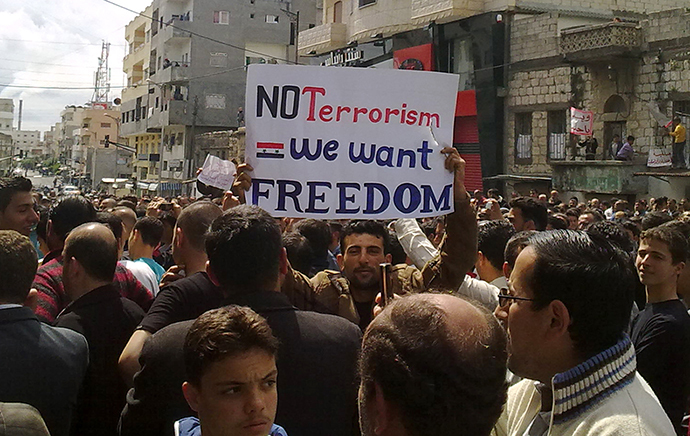
April 2011: The killing of soldiers
What we do know for certain is that on April 25, 2011, nineteen Syrian soldiers were gunned down in Daraa by unknown assailants. The names, ages, dates of birth and death, place of birth and death and marital/parental status of these 19 soldiers are documented in a list of military casualties obtained from Syria’s Defense Ministry.
The list was corroborated by another document – given to me by a non-government acquaintance involved in peace efforts – that details 2011 security casualties. All 19 names were verified by this second list.
Were these the soldiers of the “Daraa massacre?” April 25 is later than the dates suggested by multiple sources – and these 19 deaths were not exactly “hidden.”
But even more startling than actually finding the 19 Daraa soldiers on a list, was the discovery that in April 2011, eighty-eight soldiers were killed by unknown shooters in different areas across Syria.
Keep in mind that the Syrian army was mostly not in the field that early on in the conflict. Other security forces like police and intelligence groups were on the front lines then – and they are not included in this death toll.
The first Syrian soldiers to be killed in the conflict, Sa’er Yahya Merhej and Habeel Anis Dayoub, were killed on March 23 in Daraa.
Two days after those first military casualties, Ala’a Nafez Salman was gunned down in Latakia.
On April 9, Ayham Mohammad Ghazali was shot dead in Douma, south of Damascus. The first soldier killing in Homs Province – in Teldo – was on April 10 when Eissa Shaaban Fayyad was shot.
April 10 was also the day when we learned of the first massacre of Syrian soldiers – in Banyas, Tartous – when nine troops were ambushed and gunned down on a passing bus. The BBC, Al Jazeera and the Guardian all initially quoted witnesses claiming the dead soldiers were “defectors” shot by the Syrian army for refusing to fire on civilians.
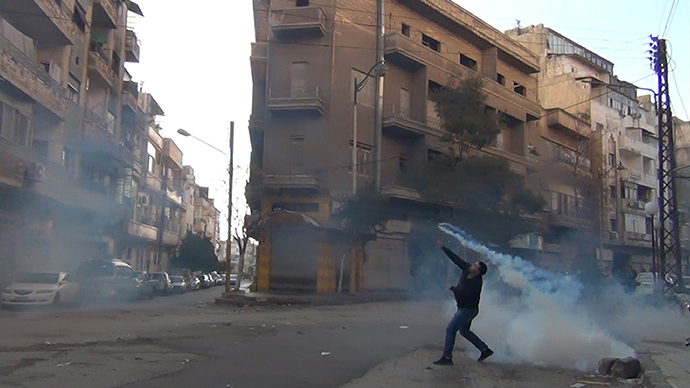
That narrative was debunked later, but the story that soldiers were being killed by their own commanders stuck hard throughout 2011 – and gave the media an excuse to ignore stories that security forces were being targeted by armed groups.
The SOHR’s Rami Abdul Rahman says of the “defector” storyline: “This game of saying the army is killing defectors for leaving – I never accepted this because it is propaganda.” It is likely that this narrative was used early on by opposition activists to encourage divisions and defections among the armed forces. If military commanders were shooting their own men, you can be certain the Syrian army would not have remained intact and united three years on.
After the Banyas slayings, soldier deaths in April continued to pop up in different parts of the country – Moadamiyah, Idlib, Harasta, al-Masmiyah (near Suweida), Talkalakh and the suburbs of Damascus.
But on April 23, seven soldiers were slaughtered in Nawa, a town near Daraa. Those killings did not make the headlines like the one in Banyas. Notably, the incident took place right after the Syrian government tried to defuse tensions by abolishing the state security courts, lifting the state of emergency, granting general amnesties and recognizing the right to peaceful protest.
Two days later, on April 25 – Easter Monday – Syrian troops finally moved into Daraa. In what became the scene of the second mass slaying of soldiers since the weekend, 19 soldiers were shot dead that day.
This information also never made it to the headlines.
Instead, all we ever heard was about the mass killing of civilians by security forces: “The dictator slaughtering his own people.” But three years into the Syrian crisis, can we say that things may have taken a different turn if we had access to more information? Or if media had simply provided equal air-time to the different, contesting testimonies that were available to us?
Facts versus fiction
A report by Human Rights Watch (HRW) relies entirely on 50 unnamed activists, witnesses and “defected soldiers” to set the scene for what was taking place in Daraa around that time.
HRW witnesses provided accounts of “security forces using lethal force against protesters during demonstrations” and “funeral processions.” In some cases, says HRW, “security forces first used teargas or fired in the air, but when the protesters refused to disperse, they fired live ammunition from automatic weapons into the crowds…From the end of March witnesses consistently reported the presence of snipers on government buildings near the protests who targeted and killed many of the protesters.”
The HRW report also states: “Syrian authorities repeatedly claimed that the violence in Daraa was perpetrated by armed terrorist gangs, incited and sponsored from abroad.”
Today we know that this statement is fairly representative of a large segment of Islamist militants inside Syria, but was it true in Daraa in early 2011 as well?
There are some things we know as fact. For instance, we have visual evidence of armed men crossing the Lebanese border into Syria during April and May 2011, according to video footage and testimony from former Al Jazeera reporter Ali Hashem, whose video was censored by his network.
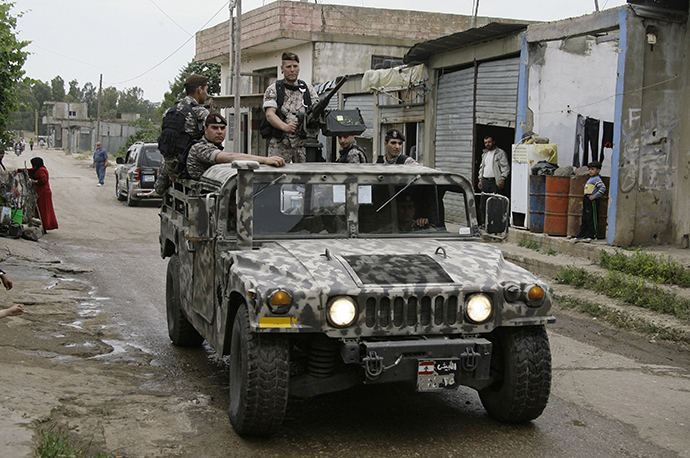
There are other things we are still only now discovering. For instance, the HRW report also claims that Syrian security forces in Daraa “desecrated (mosques) by scrawling graffiti on the walls” such as “Your god is Bashar, there is no god but Bashar” – in reference to Syrian President Bashar al-Assad.
Just recently a Tunisian jihadist who goes by the name Abu Qusay, told Tunisian television that his “task” in Syria was to destroy and desecrate mosques with Sunni names (Abu Bakr mosque, Othman mosque, etc) in false-flag sectarian attacks to encourage defection by Syrian soldiers, the majority of whom are Sunni. One of the things he did was scrawling pro-government and blasphemous slogans on mosque walls like “Only God, Syria and Bashar.” It was a “tactic” he says, to get the soldiers to “come on our side” so that the army “can become weak.”
Had the Syrian government been overthrown quickly – as in Tunisia and Egypt – perhaps we would not have learned about these acts of duplicity. But three years into this conflict, it is time to establish facts versus fiction.
A member of the large Hariri family in Daraa, who was there in March and April 2011, says people are confused and that many “loyalties have changed two or three times from March 2011 till now. They were originally all with the government. Then suddenly changed against the government – but now I think maybe 50% or more came back to the Syrian regime.”
The province was largely pro-government before things kicked off. According to the UAE paper The National, “Daraa had long had a reputation as being solidly pro-Assad, with many regime figures recruited from the area.”
But as Hariri explains it, “there were two opinions” in Daraa. “One was that the regime is shooting more people to stop them and warn them to finish their protests and stop gathering. The other opinion was that hidden militias want this to continue, because if there are no funerals, there is no reason for people to gather.”
“At the beginning 99.9 percent of them were saying all shooting is by the government. But slowly, slowly this idea began to change in their mind – there are some hidden parties, but they don’t know what,” says Hariri, whose parents remain in Daraa.
HRW admits “that protestors had killed members of security forces” but caveats it by saying they “only used violence against the security forces and destroyed government property in response to killings by the security forces or…to secure the release of wounded demonstrators captured by the security forces and believed to be at risk of further harm.”
We know that this is not true – the April 10 shootings of the nine soldiers on a bus in Banyas was an unprovoked ambush. So, for instance, was the killing of General Abdo Khodr al-Tallawi, killed alongside his two sons and a nephew in Homs on April 17. That same day in the pro-government al-Zahra neighborhood in Homs, off-duty Syrian army commander Iyad Kamel Harfoush was gunned down when he went outside his home to investigate gunshots. Two days later, Hama-born off-duty Colonel Mohammad Abdo Khadour was killed in his car. And all of this only in the first month of unrest.
In 2012, HRW’s Syria researcher Ole Solvag told me that he had documented violence “against captured soldiers and civilians” and that “there were sometimes weapons in the crowds and some demonstrators opened fire against government forces.”
But was it because the protestors were genuinely aggrieved with violence directed at them by security forces? Or were they “armed gangs” as the Syrian government claims? Or – were there provocateurs shooting at one or both sides?
Provocateurs in “Revolutions”
Syrian-based Father Frans van der Lugt was the Dutch priest murdered by a gunman in Homs just a few weeks ago. His involvement in reconciliation and peace activities never stopped him from lobbing criticisms at both sides in this conflict. But in the first year of the crisis, he penned some remarkable observations about the violence – this one in January 2012:
“From the start the protest movements were not purely peaceful. From the start I saw armed demonstrators marching along in the protests, who began to shoot at the police first. Very often the violence of the security forces has been a reaction to the brutal violence of the armed rebels.”
In September 2011 he wrote: “From the start there has been the problem of the armed groups, which are also part of the opposition…The opposition of the street is much stronger than any other opposition. And this opposition is armed and frequently employs brutality and violence, only in order then to blame the government.”
Certainly, by June 5, there was no longer any ability for opposition groups to pretend otherwise. In a coordinated attack in Jisr Shughur in Idlib, armed groups killed 149 members of the security forces, according to the SOHR.
But in March and April, when violence and casualties were still new to the country, the question remains: Why would the Syrian government – against all logic – kill vulnerable civilian populations in “hot” areas, while simultaneously taking reform steps to quell tensions?
Who would gain from killing “women and children” in those circumstances? Not the government, surely?

Discussion about the role of provocateurs in stirring up conflict has made some headlines since Estonian Foreign Minister Urmas Paet’sleaked phone conversation with the EU’s Catherine Ashton disclosed suspicions that pro-west snipers had killed both Ukranian security forces and civilians during the Euromaidan protests.
Says Paet: “All the evidence shows that people who were killed by snipers from both sides, among policemen and people from the streets, that they were the same snipers killing people from both sides…and it’s really disturbing that now the new (pro-western) coalition, they don’t want to investigate what exactly happened.”
A recent German TV investigation the sniper shootings confirms much about these allegations, and has opened the door to contesting versions of events in Ukraine that did not exist for most of the Syrian conflict – at least not in the media or in international forums.
Instead of writing these things off as “conspiracy theories,” the role of provocateurs against targeted governments suddenly appears to have emerged in the mainstream discourse. Whether it is the US’s leaked plan to create a “Cuban twitter” to stir unrest in the island nation – or – the emergence of “instructional”leaflets in protests from Egypt to Syria to Libya to Ukraine, the convergence of just one-too-many “lookalike” mass protest movements that turn violent has people asking questions and digging deeper today.
Since early 2011 alone, we have heard allegations of “unknown” snipers targeting crowds and security forces in Tunisia, Egypt, Libya, Syria and Ukraine. What could be more effective at turning populations against authority than the unprovoked killing of unarmed innocents? By the same token, what could better ensure a reaction from the security forces of any nation than the gunning down of one or more of their own?
By early 2012, the UN claimed there were over 5,000 casualties in Syria – without specifying whether these were civilians, rebel fighters or government security forces. According to government lists presented to and published by the UN’s Independent International Commission of Inquiry on Syria, in the first year of conflict, the death toll for Syrian police forces was 478, and 2,091 for military and security force casualties.
Those numbers suggest a remarkable parity in deaths between both sides in the conflict, right from the start. It also suggests that at least part of the Syrian “opposition” was from the earliest days, armed, organized, and targeting security forces as a matter of strategy – in all likelihood, to elicit a response that would ensure continued escalation.
Today, although Syrian military sources strongly refute these numbers, the SOHR claims there are more than 60,000 casualties from the country’s security forces and pro-government militias. These are men who come from all parts of the nation, from all religions and denominations and from all communities. Their deaths have left no family untouched and explain a great deal about the Syrian government’s actions and responses throughout this crisis.
The statements, views and opinions expressed in this column are solely those of the author and do not necessarily represent those of RT.
The statements, views and opinions expressed in this column are solely those of the author and do not necessarily represent those of RT.
